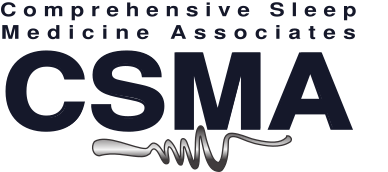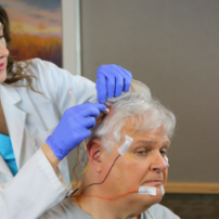A sleep study, also known as polysomnography, monitors your breathing, heart rate, body movements and brain waves while you sleep. This is performed in a specialized setting with a trained sleep technologist who is monitoring all of these aspects while ensuring your safety and comfort.
Your doctor performs a thorough assessment of your sleep complaints and if they feel further testing is required, orders a sleep study. This helps to correctly diagnose sleep disorders that you might have.
On the day of the study, you will be asked to arrive at the sleep center in the evening with the intention of sleeping there overnight. Get tips for preparing for a sleep study, including what to do during the day and what to bring for your overnight stay.
The initial part of the procedure involves the technologist attaching wires using special glue to your head, chin, chest and legs. In addition, they will have you wear soft bands on your chest and abdomen as well an oxygen monitor on your finger. Some centers may use a microphone to measure snoring and have additional audio/video recording equipment.
You will then be allowed to fall asleep while the technologist monitors your sleep parameters on a computer. In case you encounter difficulty falling asleep, medication may be used to help. Depending on the type of study ordered by your doctor, the technologist may put on a mask that goes over your mouth and/or nose and delivers pressurized air to provide treatment.
The technologist may wake you up in the middle of the night to ask you to change your body position or to replace wires if they come loose. After you wake up in the morning, the technologist will help remove the wires and monitors. The measurements from the study are reviewed by a board-certified sleep medicine physician who will make a diagnosis based on this data.

